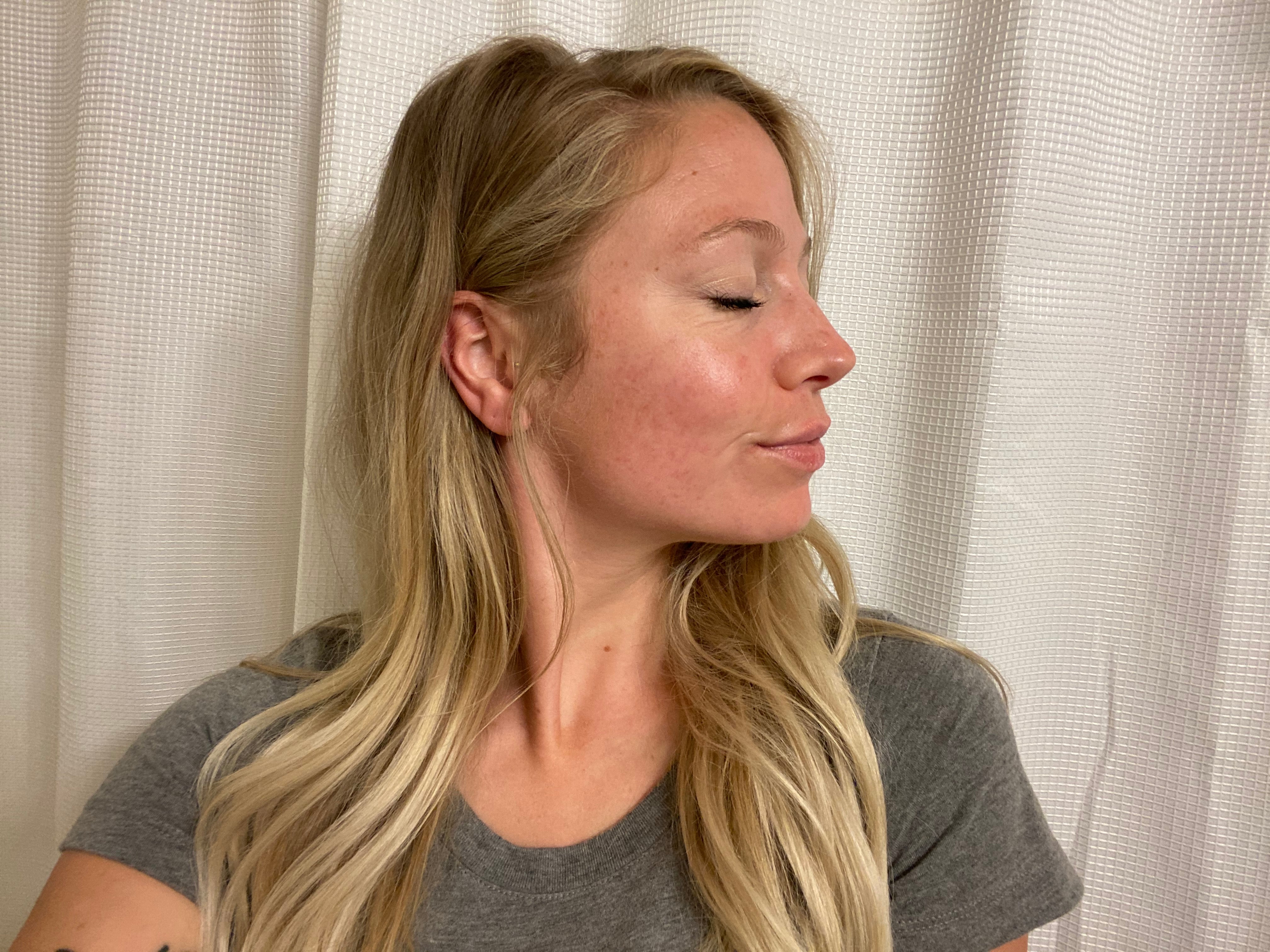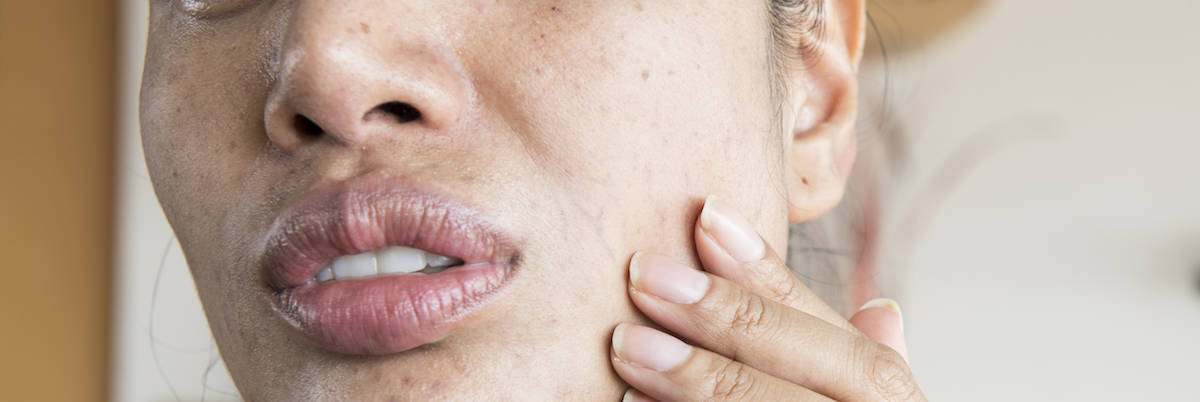
Whiteheads: Cracking the Code
Whiteheads are a common skin concern that can affect anyone, causing frustration and self-consciousness. We’ll explore what whiteheads are, how they differ from blackheads, their causes, treatment options, natural remedies, and most importantly, how to prevent them.
What Are Whiteheads?
Whiteheads, also known as closed comedones, are a common type of acne. They develop when hair follicles become clogged with a combination of sebum (skin oil) and dead skin cells. Unlike blackheads, which have open pores and appear dark due to oxidation, whiteheads have closed pores. They are characterized by small, raised bumps on the skin's surface with a white or yellowish center. Whiteheads are a form of non-inflammatory acne and are typically painless. They are most commonly found on the face, especially in the T-zone (forehead, nose, and chin), but can also appear on the neck, chest, back, or other areas of the body.

Whiteheads vs. Blackheads
Whiteheads and blackheads are both acne types but differ in their appearance and characteristics. Whiteheads have closed pores and appear as white or yellow bumps, while blackheads have open pores and are darker due to oxidized sebum.
Causes of Whiteheads
Understanding the underlying causes of whiteheads is essential for effective management. The main contributors include:
- Excess Sebum Production: Overproduction of sebum, the skin's natural oil, can clog hair follicles, contributing to whitehead formation.
- Accumulation of Dead Skin Cells: The buildup of dead skin cells on the skin's surface can mix with sebum and block hair follicles.
- Bacterial Activity: Bacteria, particularly Propionibacterium acnes, can thrive in clogged hair follicles, leading to inflammation and the development of whiteheads.
- Hormonal Fluctuations: Hormonal changes during puberty, menstruation, pregnancy, and other life stages can increase sebum production, making individuals more susceptible to whiteheads.
- Certain Skincare Products: The use of certain skincare products, especially those that are oil-based or comedogenic, can exacerbate whitehead formation.
Understanding these causes is crucial for effective management and prevention of whiteheads.
What Triggers Whiteheads?
Various factors can trigger whitehead breakouts, including:
- Hormonal Fluctuations: Hormonal changes, such as those that occur during puberty, menstruation, pregnancy, and menopause, can lead to an increase in sebum production, making the skin more prone to whiteheads.
- Stress: High-stress levels can stimulate the body to produce more sebum, contributing to clogged pores and the formation of whiteheads.
- Diet: Diets high in sugary and processed foods may trigger inflammation and affect sebum production, potentially worsening whiteheads.
- Improper Skincare: Using harsh or inappropriate skincare products, or failing to maintain a consistent skincare routine, can contribute to whitehead development.
- High Humidity and Heat: Warm and humid environments can lead to increased sweating and sebum production, potentially clogging pores.
- Use of Comedogenic Products: Using makeup or skincare products that are comedogenic, meaning they are likely to clog pores, can trigger whiteheads.
It's important to be aware of these triggers and take steps to manage them, especially if you are prone to whiteheads. A proper skincare routine and a healthy lifestyle can help prevent and manage whiteheads effectively.
Whiteheads on the Scalp
While whiteheads commonly appear on the face, they can also affect the scalp and hairline. Scalp whiteheads can be caused by factors such as improper hair care, the use of heavy hair products, or the presence of bacteria.
Is it OK to Squeeze Whiteheads?
Squeezing whiteheads may seem tempting, but it's generally not recommended. Squeezing can lead to infection, scarring, and further irritation. It's best to opt for safe and effective treatments.
Natural Treatment Options
Treating whiteheads naturally involves using natural ingredients to help manage and reduce these blemishes. Here's a step-by-step guide on how to treat whiteheads effectively:
- Maintain a Consistent Skincare Routine: Gently cleanse your face twice a day with a mild, non-comedogenic (won't clog pores) cleanser. Avoid scrubbing the affected area vigorously, as it can worsen inflammation.
- Exfoliate Regularly: Use a gentle exfoliant 2-3 times a week to remove dead skin cells and prevent clogged pores. Be cautious not to over-exfoliate, as this can exacerbate the problem.
- Warm Compress: Applying a warm, damp compress to the affected area can help open pores and promote natural drainage. Gently press the warm compress against the whiteheads for 5-10 minutes, then carefully cleanse the area.
- Avoid Touching: Avoid picking, squeezing, or touching whiteheads, as this can introduce bacteria and lead to infection and scarring.
- Avoid Comedogenic Products: Use non-comedogenic (non-pore-clogging) skincare and makeup products to prevent further clogging of pores.
- Moisturize: Even if you have oily or acne-prone skin, it's important to use a lightweight, non-comedogenic moisturizer to keep your skin hydrated.
- Sun Protection: Use a broad-spectrum sunscreen with an SPF of 30 or higher to protect your skin from UV damage, which can worsen acne.
- Maintain a Healthy Lifestyle: Maintain a balanced diet with plenty of fruits, vegetables, and whole grains. Limit consumption of dairy and sugary foods, as they may exacerbate acne in some individuals. Get regular exercise and manage stress, as both can have an impact on skin health.
- Patience: Consistency is key. It can take time for treatments to show results, so be patient and stick to your routine.
Prevention Strategies
Preventing whiteheads is often more effective than treating them. It involves adopting a proactive skincare routine and making lifestyle adjustments. Here are some tips to help you prevent whiteheads:
- Cleanse Regularly: Use a gentle, non-comedogenic cleanser to wash your face twice a day (morning and night). Cleansing helps remove excess oil, dirt, and dead skin cells.
- Exfoliate: Use a mild exfoliant containing salicylic acid or glycolic acid 2-3 times a week. Exfoliation helps keep pores clear by removing dead skin cells.
- Moisturize: Even if you have oily skin, it's important to use a lightweight, non-comedogenic moisturizer to maintain skin hydration and prevent excessive oil production.
- Non-Comedogenic Products: Choose skincare and makeup products labeled as "non-comedogenic" to minimize the risk of clogged pores.
- Sun Protection: Use a broad-spectrum sunscreen with an SPF of 30 or higher to protect your skin from UV damage. Some acne treatments can increase sensitivity to the sun.
- Hands Off: Avoid touching your face, as this can transfer bacteria from your hands to your skin, potentially causing breakouts.
- Cleanse After Exercise: If you exercise, wash your face and body promptly after your workout to remove sweat and oil that can clog pores.
- Diet and Hydration: Maintain a balanced diet rich in fruits, vegetables, and whole grains. Limit dairy and sugary foods, as they may contribute to acne in some individuals. Stay well-hydrated by drinking plenty of water.
- Stress Management: Practice stress-reduction techniques, as high-stress levels can stimulate sebum production and worsen acne.
- Avoid Over-Exfoliating: While exfoliation is beneficial, overdoing it can irritate the skin and lead to more whiteheads. Stick to the recommended exfoliation frequency for your skin type.
- Clean Pillowcases and Bedding: Regularly wash your pillowcases and bedding to prevent the accumulation of oil, dirt, and bacteria that can transfer to your skin.
- Avoid Heavy Hair Products: Use oil-free hair products and avoid applying them to your face. Heavy hair products can clog the pores on your forehead and hairline.
- Stay Hydrated: Proper hydration helps maintain skin health, so drink enough water throughout the day.
Remember that consistency is key when it comes to preventing whiteheads. Whiteheads are a common skin issue that can be managed effectively with the right knowledge and practices. By understanding the causes, triggers, and prevention strategies, you can maintain clear and healthy skin while avoiding the temptation to squeeze whiteheads.







